Drummer Back Pain
How to prevent drummer back pain
Prevent Drummer Back Pain
Drummer back pain is a huge problem for may of us but there are a few simple things we can do to decrease the chances of it stopping us drumming.
For anyone that has experienced this you will know that it can be debilitating. It can be extremely painful and it can actually stop us being able to do what we love…..drum! Below we will look at why drummer back pain occurs and how we can remedy it, or even better than that, prevent it in the first place.
“Practice, practice, practice,” that’s what many kids are told, “Practice makes perfect after all.”
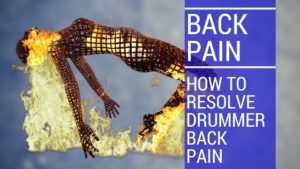 It’s a fair point. Steve Gadd may be naturally talented, but he still had to work hard to become the musician he is today. What many drummers fail to realise is that hours and hours of practising bad habits can do more harm than good. It’s easy to ignore such practical and boring advice in the early stages. It’s easy to nurture the single minded goal of playing 16th notes between the feet faster than Joey Jordison, but if correct posture and techniques are ignored you may be a cripple before you reach that goal. Let’s just forget about the limitations that bad technique and posture can put on your playing, and focus purely on physical health. In particular drummer back pain.
It’s a fair point. Steve Gadd may be naturally talented, but he still had to work hard to become the musician he is today. What many drummers fail to realise is that hours and hours of practising bad habits can do more harm than good. It’s easy to ignore such practical and boring advice in the early stages. It’s easy to nurture the single minded goal of playing 16th notes between the feet faster than Joey Jordison, but if correct posture and techniques are ignored you may be a cripple before you reach that goal. Let’s just forget about the limitations that bad technique and posture can put on your playing, and focus purely on physical health. In particular drummer back pain.
Eighty percent of adults suffer from back pain at some point in their life. This can have a severe detrimental effect on their lives and even force them to give up hobbies or work, with one in eight unemployed people blaming back pain for the jobless state.
These are depressing statistics but a large majority of these cases are purely muscular problems as a result of bad habits over a long period of time. Very few people actually have spinal damage. How many people do you know who slouch in front of a computer screen for 8 hours each day before rushing home to slump on the couch for a few hours only to move to an old, sagging mattress for a further 8 hours? The spine is not designed to support the body in such a way and if we habitually live like this, after several years, the strain will make its presence known.
This is no different for a drummer who may practice or gig for several hours, not to mention lugging the gear to and from the van. Concerning the constant lifting of heavy drum gear, you have two options to avoid drummer back pain; 1) become a superstar and get the roadies to break their backs, or 2) lift carefully with a straight back, bending from the knees.
The playing aspects, however, need to be looked at in slightly more depth, but as it is only muscular strain, it can often be easily cured by changing the fundamentals of your playing.
Doctor of Chiropractors Timothy Jameson and Founder/Director of the Chiropractic Performing Arts Network (musicianshealth) says, “The spine is a dynamic organ that responds to physical, chemical, and emotional stress throughout your lifetime.
Physical stresses are problems like postural distortions, previous auto injuries, previous sports related injuries, falls, forward head posture and cumulative traumas, such as repetitive drumming for hour upon hour.
Chemical stress is what you are putting (or not putting) in your body. Put lousy foods in your body and you have poor health, as your spine is directly related to your health.
Finally, a very important aspect of spinal health is your current and past emotional health. Your current emotional health directly impacts the way you hold your body. If you’re suffering from depression or poor self-esteem, you will carry your body with a forward head posture and drooped shoulders. If you have severe emotional stress in your past, it can be stored within the neuro-muscular network and create chronic spinal stress.”
So your diet and emotional state play a big role in keeping your spine in good working order.
WHEN IS A CHAIR NOT A CHAIR?
“When it is an instrument of torture,” says Richard Norris in The Musician’s Survival Manual. The very chair that seemingly supports you through all your greatest playing moments may actually be the most health threatening element of your set-up, engaged in a mission to sabotage your career. We’ve all seen the ergonomic office chairs that promote correct posture by positioning the feet behind us, but this isn’t practical for a drummer when the bass drum is in front so what can we do?
Stool Height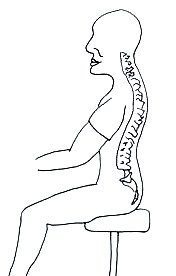 The importance of correct seat height is endorsed by Vinnie Colaiuta who used to sit incredibly low until he suffered from chronic back pain as a result. As drummers come in many different shapes and sizes, each player’s set-up should be very individual, enabling them to play the instrument with ease whilst avoiding unnecessary stretching. The optimal height for a drum throne is when it allows you to sit with your knees level or several inches below your hips and both feet sit on the pedals several inches in front of your knees.
The importance of correct seat height is endorsed by Vinnie Colaiuta who used to sit incredibly low until he suffered from chronic back pain as a result. As drummers come in many different shapes and sizes, each player’s set-up should be very individual, enabling them to play the instrument with ease whilst avoiding unnecessary stretching. The optimal height for a drum throne is when it allows you to sit with your knees level or several inches below your hips and both feet sit on the pedals several inches in front of your knees.
Dr Timothy adds, “The position of the seat in relation to the drum kit is also important. A movement of an inch or two in either direction can be essential in keeping spinal and muscular balance.”
Posture
Why do some people manage to play for several decades without any problems when others can’t avoid the agony in a practice session? Clinical Associate Professor at Ithaca College, Nick Quarrier, says, “The answer to this million dollar question may be that repetitious activity is not injurious by itself unless it is performed in an abnormal stressful posture. More importantly, the abnormal stressed posture may be the cause of a large percentage of music-related injuries.”
The great, late Elvin Jones Spoke of the importance of his posture saying that he had to be comfortable and relaxed when playing. That meant sitting at the right height and being centrally balanced.
To sit correctly whilst drumming is no different from any other activity. You should be upright with a straight back with your shoulders above your hips. To find the correct posture, sit on the stool and completely slouch. Now straighten your back as much as possible with an over exaggerated lower back curve. You can then release the position very slightly to find the perfect position. This may feel very strange if you are used to slouching but by doing this process, it may highlight the extreme difference between correct posture and slouching. This way your core muscles are supporting your body rather than your spine. Instead of scrunching forward, your arms and shoulders should hang naturally and relaxed with your weight distributed evenly across both hips.
An upright spine is helped by raising the back of the seat by about 15 or 20 degrees. This is easily achieved with a block of wood under the back legs. This position encourages correct lumbar curve and sitting up so tall prevents the flattening of your diaphragm and collapsing of your chest, which limits full breathing.
As well as posture, the way you incorporate muscular movement in your playing can also prevent injury. A useful exercise from Dr Timothy is to, “Check the muscular tension in your neck whilst playing slower beats. Now play at 150bpm and check how much tension you are carrying throughout your body as the speed increases?”
BACK TO BASICS – PREVENTING DRUMMER BACK PAIN
If you are lucky enough to have avoided back pain thus far, here are some tips to keep you on the right path.
Warm up An athlete would never burst into a sprint without a thorough warm-up and neither should a musician. Most players have their own preferred warm up to avoid injury and ensure optimum performance. It may simply entail a sequence of rudiments, gradually increasing with speed.
Analyze your lifestyle Your drumming technique may be perfect but that’s no good if you’re causing the damage elsewhere. Ensure good habits through every activity, i.e. sport, computer usage, lifting, carrying gear, etc.
Kit set-up Make sure your kit is set up for maximum efficiency to avoid over stretching.
Stretch Every human should stretch their muscles, especially if you’re involved in physical activity. Well stretched gluteal muscles and hamstrings are important to maintain looseness, and lower back mobility exercises are crucial to avoid seizing up later in life. Below are four examples of lower mobility exercises.
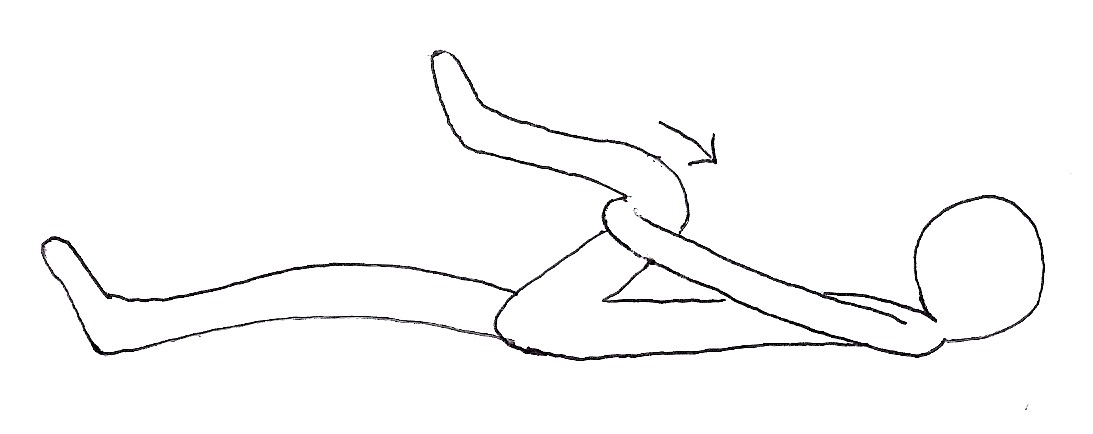 A) Flexion Stretch
A) Flexion Stretch
Lying on back with head on floor, pull one knee back to chest and hold for several seconds. Repeat with other knee.
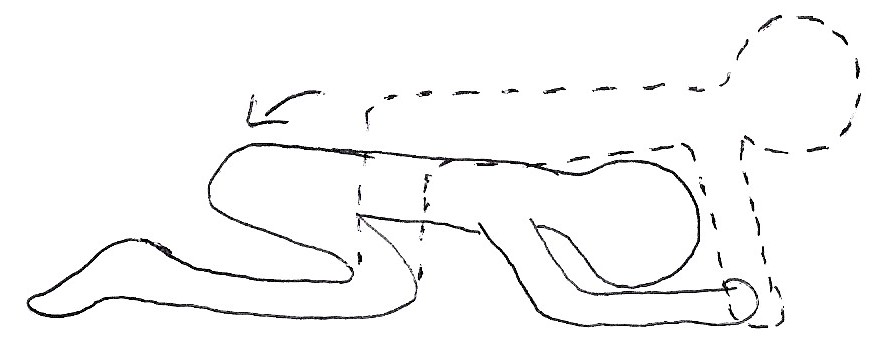 B) Flexion Stretch 2
B) Flexion Stretch 2
Starting on all fours, bring buttocks down to heels. Hold for several seconds and repeat.
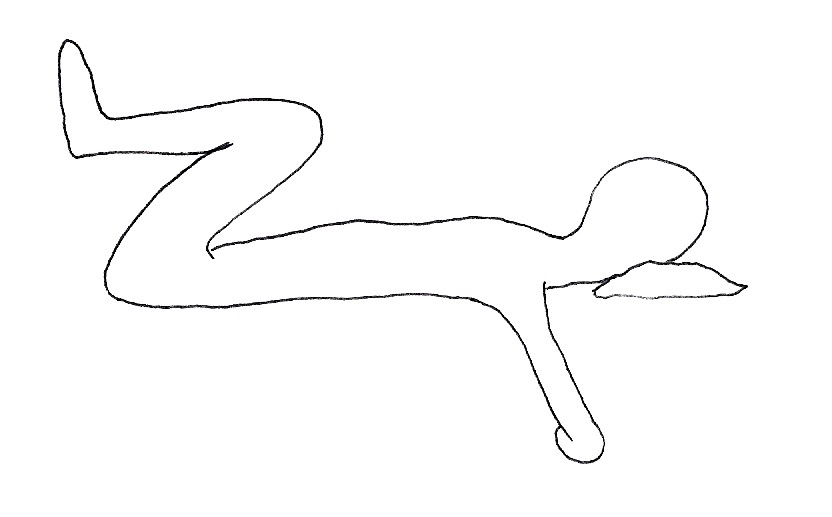 C) Back Extension
C) Back Extension
Lie on back, knees bent up with head on a small pillow and arms out to the side in a crucifix position. Hold it for two minutes without allowing the lower back to arch.
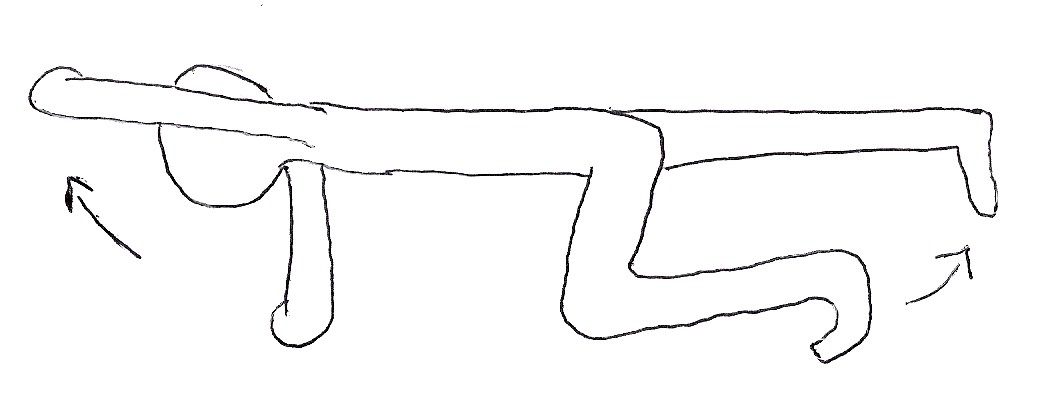 D) Back Stabilization
D) Back Stabilization
Starting on all fours, stretch out right arm and left leg simultaneously, keeping back and neck straight. Hold for several seconds and repeat with opposite limbs.
Core muscle stability Our core muscles are often the key to great posture. With bad habits, these muscles wither and so our back takes the strain which in turn allows the muscles to wither even more. A vicious circle occurs. By developing these abdominal muscles, the back is relieved from this extra strain. Core muscles are not your six-pack but do sit behind them forming a corset-esque band around the tummy. You strengthen these by tensing in the same way you would upon entering a cold sea. You should aim to hold that tension for 10 seconds whilst allowing maintained, natural breathing.
Meditation Drummers such as Steve Smith frequently talk about practising as a meditation in a relaxed way with focused breathing. Increasingly, physiotherapists are suggesting meditation as a method of correcting physical problems such as back pain. A mass of books and CDs such as Meditation for Optimum Health: How to Use Mindfulness and Breathing to Heal Your Body and Refresh Your Mind (Andrew Weil & Jon Kabat-Zinn) are available to talk about the benefits of this and how to put it into action.
The Alexander technique is very popular with many musicians. Lessons are undertaken and your specific needs are addressed through a method that releases harmful tension by coordinating the mind and body. This also vastly improves posture and general health.
The Feldenkrais Method as taught at Berklee College of Music, is a system that allows the body to move and function more efficiently and comfortably. It can re-educate the nervous system and improve motor ability whilst relieving pressure on joints, allowing the body to heal repetitive strain injuries. Continued use of the method can relieve pain and lead to higher standards of achievement in music.
NO TURNING BACK? –-CURE
If you’re one of the many who suffers from drummer back pain, here are some tips to get on the road to recovery.
Acupuncture A Chinese method with a 2000 year history, involving thin needles pushed into specific points in the body thought to correspond to certain organs and anatomic areas deep inside.
Chiropractor The chiropractic philosophy is that realigning the spine relieves pressure on the spinal nerves, which can help restore natural nerve function throughout the body. They believe a well-aligned body is more naturally balanced and therefore less pain is experienced.
Osteopaths believe the body is an integrated, biological system. As a result, problems in one area of the body can adversely affect other areas. The function and structure are closely related so by correcting the structure, the body will function properly.
Massage therapy Studies have shown massage to improve range of motion, blood circulation and levels of endorphins.
Yoga develops muscular endurance and flexibility through stretches that allow the muscles to be strengthened.
Spinal Surgery Usually considered a last option as 95% of patients with low back pain can benefit from non-operative methods.
WHICH PROFESSIONAL?
Back pain is still not fully understood and different professionals from different practices will offer contradicting opinions and cures.
As a result, finding the right cure for your backache can be a real headache but it is well worth the effort, trying different methods to see what works for you. Find out which treatments are covered by health insurance and start with those to avoid the expense. Before embarking on any type of treatment, seek professional advice first and use this article only as a guide.
Whatever your situation, it is important to play with correct posture so you can enjoy a long life without drummer back pain. It may even help you play faster and more naturally so get back in the practice room and sit up straight!
RELEVANT BOOKS
The Athletic Musician: A Guide to Playing Without Pain
Playing (Less) Hurt: An Injury Prevention Guide for Musicians
Body Learning: An Introduction to the Alexander Technique
The Alexander Technique for Musicians
Musicians’ Injuries: A Guide to Their Understanding and Prevention
Faster Hands in 7 Days FREE Challenge
By clicking below you can gain access to a FREE ‘7 days to faster hands’ drum course that will guarantee to raise your speed by the end or your money back (yes it is free so not the best guarantee ever!). But seriously, it will make a difference in a really short space of time.
But more than trying to create unrealistic miracles in a short space of time, it will also set up long term habits that will help you find your full potential as a drummer long into the future. And that is way more important.
It will show you:
- The fundamental techniques to play at your best level
- How to properly grip the sticks
- How to prepare yourself properly to drum
- How to make the stick do the work so you don’t have to
- How to set your drums up for optimum speed
- How to apply this around the kit
- Exercises to develop control as well as speed
- How to take this on into the future to become awesome!
And more than that you will also get a ton of other great free drum resources to make you a better drummer such as playalong tracks, articles, exclusive video lessons and more. And it’s all free!
Watch the video to get a feel for what the seven day course entails and then scroll down to get the course immediately.
Start today and build your hand speed up
So let’s start the course today. Do it now and begin your 7 day process to get faster hands. This time next week you’ll be enjoying the results and thinking about how you can take it to the next stage (by the way, the course helps with that too as we’ll be checking speed progress over the next 12 months).
If at any time you’re not digging the content, simply unsubscribe. There’s nothing to lose and your details won’t be shared with anyone, nor will you be bombarded with sales type emails. Just great free drum content that I hope provides real value for you.



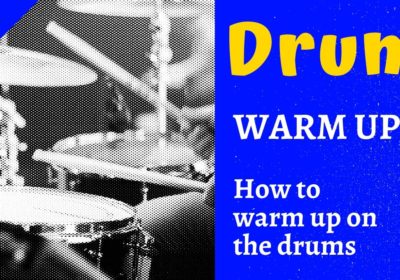
[…] Your back should be relaxed as you’re sitting upright, instead of being too rigid, and your lower back should have a slight curve. It’s helpful to sit on the edge of the throne, rather than too far back. […]
The rhythmic heart of drumming is fascinating how the cadence of beats resonates with the silent rhythm of our spine’s health. Drummer’s back pain so eloquently unpacked here, is not just about the thump and crash but the very stance of our being, from how we sit to the emotional tides coursing through us. The juxtaposition of the forceful dynamism of drumming with the tranquil art of meditation underscores the intricate symphony of body, mind, and soul. Just as a drummer orchestrates myriad beats into a harmonious rhythm, so must they synchronize their health’s various facets for an encore-worthy performance.